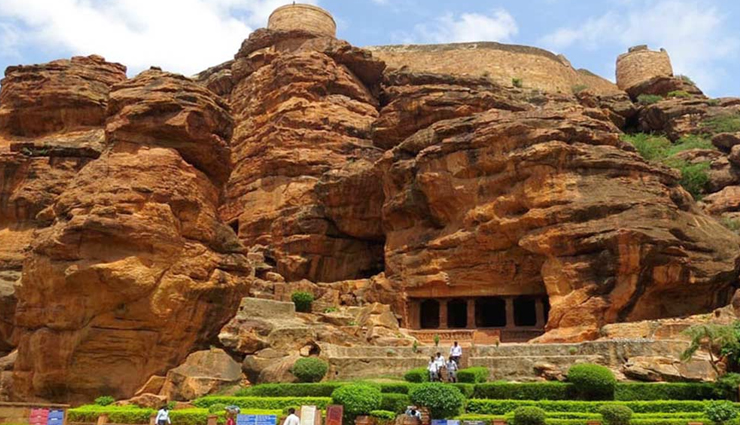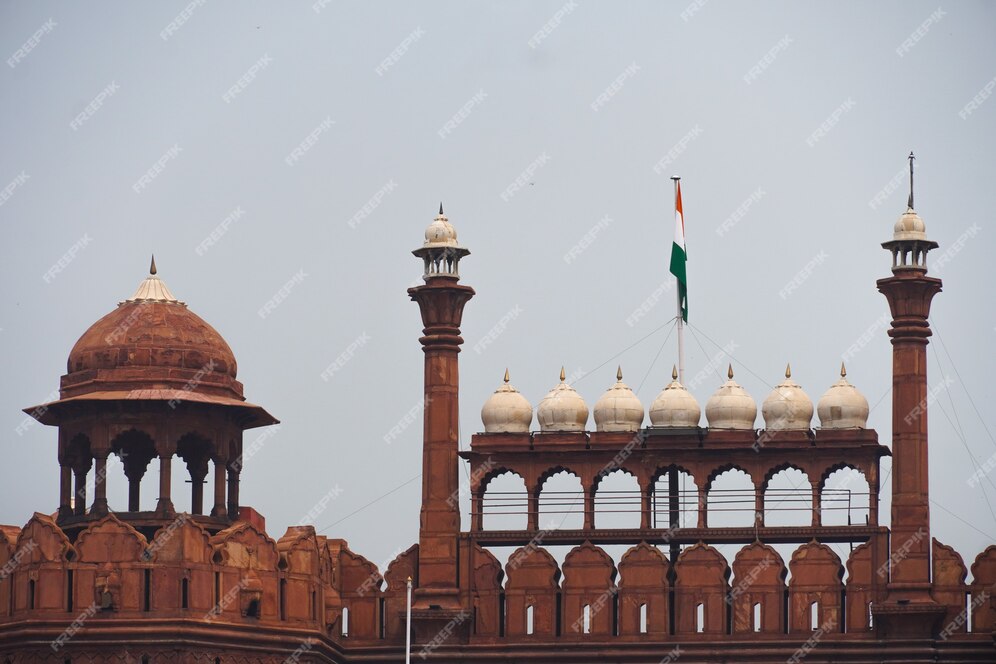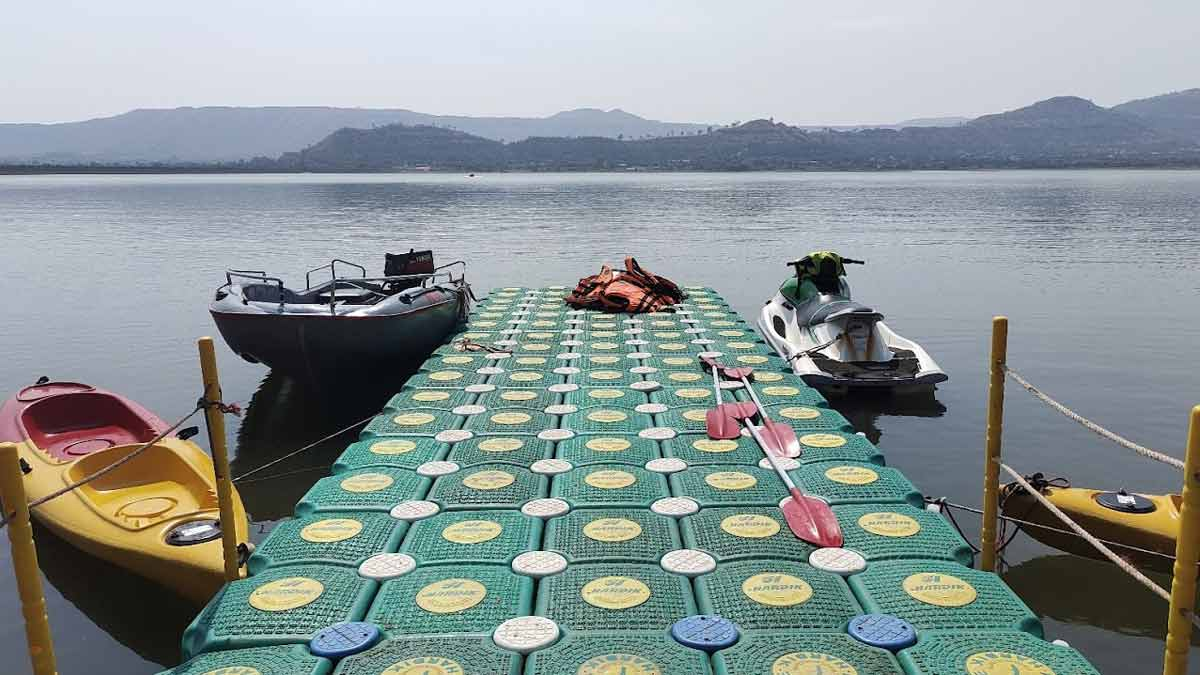India is a country that is completely rich. Being one of the most ancient civilizations in the world, India has many centuries-old wonders compared to other countries. There is a treasure of tourism hidden for tourists in every direction here. From the snowy mountains in the north to the waterfalls and seas in the south, from the golden deserts of the west to the greenery of the east, everything is here. Similarly, the ancient and huge caves hidden inside the forests and valleys of India are famous for not one but thousands of miraculous stories. Most of the natural caves in India are Hindu, Jain, and Buddhist cave temples. Today in this episode we are going to tell you about the famous caves of India which remain a center of attraction for pilgrims and history buffs. Let's know about these caves...

Ajanta Ellora Caves, Maharashtra
The Ajanta-Ellora caves located near Aurangabad city of Maharashtra have been made by cutting huge rocks. 29 caves are in Ajanta and 34 caves are in Ellora. Now these caves are being preserved as World Heritage. The Ajanta caves depict Buddhism from 200 BC to 650 AD. The Ellora caves show the influence of the confluence of faith shown towards the three religions of Hinduism, Jainism, and Buddhism. These caves came into existence from 350 to 700 AD. Archaeological and geological research revealed that these caves cannot be made by any ordinary person or today's modern technology. There is a tunnel here, which takes it to the underground city. The Peetalkhora caves are also famous in the Aurangabad district of Maharashtra.
Badami Caves, Karnataka
The Badami Caves located in Karnataka in South India are quite ancient. The Badami caves show the Chalukyas' great love for architecture. These magnificent caves are also among the top tourist attractions in Karnataka. Here you will find four cave temples. They are dedicated to Lord Shiva, two temples of Vishnu, and a Jain temple. The 5th-century Agatirtirtha tank is nearby and so is the lovely Bhutanatha temple. This rock-cut cave is made of red sandstone and built on a hill. The caves date back to the 6th and 7th centuries AD and they are located at the mouth of a valley. The architecture seen here is of the Nagara style of North India and South India.
Amarnath Cave, Jammu Kashmir
The Amarnath Cave is located in Jammu and Kashmir and is one of the most famous Hindu temples. The temple is dedicated to Lord Shiva, claimed to be over 5,000 years old, and is an important part of ancient Hindu mythology. This cave is located at an altitude of about 3,888 meters and about 141 kilometers from Srinagar, the capital of Jammu and Kashmir. The main Amarnath cave has an ice stalagmite that resembles a Shiva linga that expands and contracts with the cycle of the moon. According to Hindu mythology, this is the cave where Shiva explained the secret of life and eternity to his divine wife Parvati.
Borra Caves, Visakhapatnam
Located in the Ananthagiri Hills of Araku Valley in Visakhapatnam district on the east coast of India, Borra Caves is one of the most amazing formations of nature. Borra Caves is the largest cave in the country located at an altitude of about 705 meters. Let us tell you that Borra Caves are limestone formations that extend to a depth of 80 meters, and are considered to be the deepest cave in India. The combination of sunlight and darkness presents a wonderful view into the depths of Borra Caves, which is truly unimaginable.
Chanda Devi Caves, Chhattisgarh
Ancient Buddhist Caves of Chanda Devi
Located in the Singhadhruva area, Chanda Devi Caves are located on the banks of Mahanadi, about 25 km from Sirpur town of Mahasamund district of Chhattisgarh. Buddhist philosopher Nagarjuna meditated here. There are many caves in Chhattisgarh, but Sitabeng Cave is located in the Ramgarh Hills of Ambikapur in Surguja district. These are 2 caves - one Sitabeng and the other Jogimara. To reach here, you have to go through the natural tunnel Hatipal. You can reach Kailash Cave, Dandak Cave, and Kutumsar Cave only through the hilly areas and dense forests of Chhattisgarh. It is near the National Park of Kangar Valley. There are many caves in the Bastar district of Chhattisgarh.
Undavalli Caves, Andhra Pradesh
About 8 km from Vijayawada city of Andhra Pradesh, Undavalli Caves are located on the banks of Krishna River. The caves are said to have been built by the Vishnukundin kings and date back to the 7th century AD. The ancient caves are believed to be carved out of solid sandstone and are dedicated to Anantapadmanabha Swamy and Narasimha Swamy. Of the many cave structures found here, the best are the four stories with a huge statue of Lord Vishnu in a reclining position.
Mawsai Caves, Meghalaya
Located at a distance of 6 km from Cherrapunji, Mawsai Caves are one of the most popular caves in India, located in the northeastern state of Meghalaya, the abode of the clouds. The caves are famous for being the only cave that has plenty of light to enable tourists to explore its natural formations. These limestone caves are very long. However, only 150 m of it is open to tourists. The cave has many stalactites and stalagmites caves in various shapes and forms. These are the result of years of natural abrasion and water dripping. Mavasai Cave is one such cave that is easily accessible and is one of the few caves in the country that can be explored without a guide.

Bhimbetka Caves, Madhya Pradesh
Located in Bhiyanpura in Raisen district of Madhya Pradesh, Bhimbetka Caves offers a different look at the prehistoric era of India. Bhimbetka Caves are like a natural gallery that combines paintings from prehistoric times to the medieval period. Bhimbetka is one of the UNESCO World Heritage Sites and this site has been declared a World Heritage Site in the year 2003. More than 750 rock shelters have been found on Bhimbetka Hill, one of the seven hills of this type, which are spread over an area of about 10 kilometers. Traveling here and seeing the caves is no less than an adventure. It preserves the remains of art-rich rock shelters, Bhimbetka fort, and mini stupa. Which points to Buddhist influence. Many inscriptions have also been found here, which belong to an unknown era as well as the Sunga, Kushan, and Gupta periods. Bhimbetka is an ideal place for history lovers and is indeed one of the best places to visit in Madhya Pradesh.
Arjan Cave, Kullu
Jagasukh place is at a distance of 5 km from Kullu. Jagatsukh was the capital of King Jagat Singh of Kullu. The temples of Bimbakeshwar and Gayatri Devi are especially attractive at this place. Near it is a place named Hamta. Here is the famous Arjun Cave. This cave There is a huge statue of Arjun. 2 km away from here is a place called Triveni, where Vyas Ganga, Dhomaya Ganga, and Somaya Ganga meet. At a distance of 1 km from this, there is a hot water spring Kalat Kund and Kapil Muni's ashram is also here. There is also a famous cave monastery called Toba here.
Udayagiri and Khandagiri Caves, Bhubaneswar
The ancient Udayagiri caves are located near Bhubaneswar in the state of Odisha. The Udayagiri caves are famous for 33 rock-cut chambers displaying Hindu and Jain sculptures and wall paintings. The history of these caves dates back to the Gupta period around 350-550 AD, which is the era of the foundation of Hindu religious ideas. The most famous structure in the Udayagiri cave is a 5-foot-high statue of Vishnu's boar incarnation with devotees standing on its side. These caves are located at a distance of about 6 kilometers from Bhubaneswar. These caves are said to be one of the earliest caves built by the Jain community. There are 18 caves located in Udayagir and 15 in Khandagiri, out of which Rani Cave is considered the most special.
(PC: Lifeberrys)










